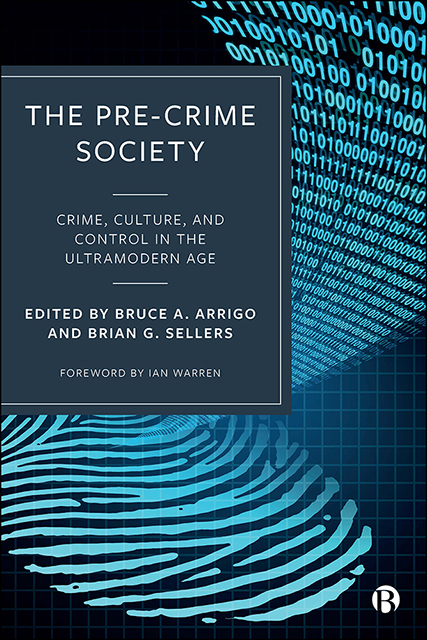Book contents
- Frontmatter
- Dedication
- Contents
- Notes on Contributors
- Foreword
- Introduction: The Ultramodern Age of Criminology, Control Societies and ‘Dividual’ Justice Policy
- Part I Theories, Theorists and Theoretical Perspectives
- Part II Institutions, Organizations and the Surveillance Industrial Complex
- Part III Dataveillance, Governance and Policing Control Societies
- Part IV Systems of Surveillance, Discipline and the New Penology
- Part V Globalizing Surveillance, Human Rights and (In)Security
- Afterword: ‘Pre-Crime’ Technologies and the Myth of Race Neutrality
- Index
8 - The Politics of Actuarial Justice and Risk Assessment
Published online by Cambridge University Press: 14 April 2023
- Frontmatter
- Dedication
- Contents
- Notes on Contributors
- Foreword
- Introduction: The Ultramodern Age of Criminology, Control Societies and ‘Dividual’ Justice Policy
- Part I Theories, Theorists and Theoretical Perspectives
- Part II Institutions, Organizations and the Surveillance Industrial Complex
- Part III Dataveillance, Governance and Policing Control Societies
- Part IV Systems of Surveillance, Discipline and the New Penology
- Part V Globalizing Surveillance, Human Rights and (In)Security
- Afterword: ‘Pre-Crime’ Technologies and the Myth of Race Neutrality
- Index
Summary
Introduction
There is probably more than a grain of truth in Van de Steene and Knight's (2017) observation that ‘the inevitability of digital transformation is set to shape the way justice is done and experienced’ (p. 256). New technologies are being introduced into criminal justice systems across Europe, Australasia and North America at a rate that has been described as astonishing, with Morris and Graham (2019) noting that the range of available services and programs now includes electronic monitoring, apps for mobiles and other digital devices, kiosks, in-cell technologies, digital storytelling, virtual reality, video conferencing, social media, and websites and online portals. Increasingly these new technologies are being used to supplement, augment and, at times, even replace other modes of service delivery. In Aotearoa/New Zealand, for instance, many major public services now use algorithms as part of core operations that range from identifying fraud, passport facial recognition, anticipated tax refunds, resolving fines and even tracking clients who require additional assistance for their recovery from physical or psychological injury to re-enter the workforce (Stats NZ, 2018).
Generally, it seems that correctional practitioners, prisoners and offenders have reacted positively to these new ways of ‘doing business’, with Morris and Graham (2019) suggesting that those who fail to embrace the new digital technologies can be categorized as falling within one of two camps: those who feel dystopia, or who associate technology ‘with surveillance, dehumanised and distant practices set in Orwellian visions of the future’, and those who feel retrotopia, or who have ‘a retrospective nostalgic yearning for (perceivably) less complicated and more human, benevolent rehabilitative practices past’ (p. 4). Proponents of technological innovation point to the improvement in efficiency, reliability and accuracy that automation can bring, as well as more fundamentally, arguing that the adoption of the scientific methodology will inevitably lead to better professional decision-making (see Ross, 2018).
The focus of this chapter is on the specific application of technology to those risk assessments used by correctional services in the Western world. Olver and Wong (2019) have recently observed that risk assessments are now routinely used to inform a wide range of criminal justice decision-making processes, including those relating to bail and remand, sentencing and preventative detention.
- Type
- Chapter
- Information
- The Pre-Crime SocietyCrime, Culture and Control in the Ultramodern Age, pp. 179 - 200Publisher: Bristol University PressPrint publication year: 2021

